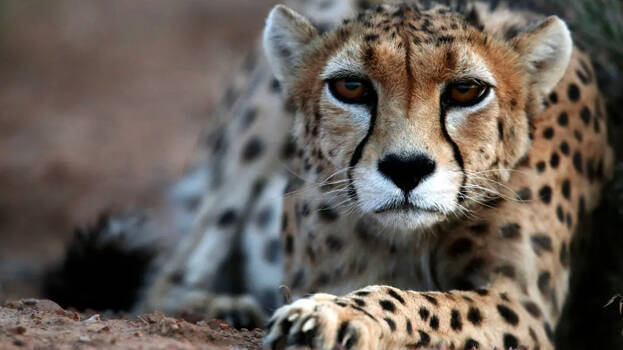The American Akita Dog is a one with a history. Therefore in this article, we will share with you the history of this amazing breed.
The Japanese History of the American Akita
This dog breed originates from Japan’s snowy mountainous regions in the rural areas of Akita (where it gets its name) and Odate. They were used in hunting animals like wild boars, Ussuri brown bears, and elks. Dogfighting gained popularity in Japan during the 1600s and itinvolved these dogs. They also accompanied Samurais during the 1500s down to the 1800s.
At the turn of the 20th century, this breed was experiencing a decline because they were constantly crossed with St. Bernard, German shepherd, and the Mastiff. This caused a loss of their unique spitz characteristics. As a result, they began to have drop ears, loose skin, straight tails, and color considered to be “non-Japanese” (any color apart from white, brindle, or red).
To restore these unique physical characteristics, another hunting Japanese dog the Matagi, and Hokkaido Inu were bred to mix into the Akita Inu.
There are two breeds of Akita;the Japanese breed and the American breed. While the former doesn’t have the genes of Western dogs after the breed reconstruction, the latter is a mixture of this breed before the reconstruction. Hence, the American type is a mixed breed which by Japanese standards is not regarded as true Akita.Click here to learn more about the differences between these breeds.
These dogs were employed to track lost sailors and war prisonersin the Russo-Japanese War. Some of these dogs were also used as guards and scouts.
They were crossbred with the German Shepherds to protect them from being culled as a result of an order from thethen government as a means of preventing disease spread. This was because people began eating these dogs as food was in short supply.Other owners released their dogs into the mountain areas around where they bred with the Matagi.The survival of this breed can be attributed to the breeding project efforts of MorieSwataishi.
The American Akita ancestors were initially a Japanese Akita variant. This variant was not accepted in Japan as a result of their markings. Hence, this disqualified them from show competitions.
An Akita known Hachikō(born 1923) brought global recognition for the dog breed. The faithfulness of this dog is now a national loyalty symbol especially to the institution and person of the Chinese Emperor. Visit https://en.wikipedia.org/wiki/Hachik%C5%8D to read the story of this dog.
This breed was declared to be a Japanese official Natural Monument in 1931. The Odate Mayor of the Akita Prefecture organized the Akita InuHozonkaito protect the original breed as a natural treasure. The Akita Dog Museum was opened in 1967 to mark the Akita Dog Preservation Society’s 50th anniversary to keep photos, documents, and information.
The Japanese have a tradition of receiving an Akita statue when a new baby is born as a symbol of long life, heath, and happiness.
The American History of the American Akita

The difference between the Japanese and American breeds happened after World War II. Helen Keller is recognized as the person who brought the dog to America. She received two dogs named Kamikaze-go and Kenzan-goin 1938 from the Japanese government.
Mr. Ogasawara made the presentation of Kamikaze-go who died a month from a distemper after Keller came back to the US at just 7 ½ months.
Kenzan-go was then sent to Keller. Unlike his late little brother, he lived until the middle of the 1940s.
In 1939, US servicemen who were occupying Japan then saw these dogs and decided to bring them back to the US after their tour. They seemed to prefer their size which was larger compared to the fox-like size of the Akita-Inu.
While Japanese fanciers worked on the breed restoration to ensure its status of National Monument was restored, American fanciers focused on breeding larger and heavier-boned dogs that were physically intimidating.
Although both types share the same ancestry, they have several differences. The American breed comes in different colors whereas only breeds with brindle, white, or red are considered acceptable by the Japanese breed.
Furthermore, the American type possesses black masks or/and pinto whereas this is not acceptable by Japanese standards. The Akita size of the former is much larger with heavier bones than the latter that is smaller with lighter bones. The American type also has a head like that of a bear while the Japanese type’s head is like a fox.
The American Kennel Club recognized this breed in 1955 but it was categorized under its miscellaneous class. It was later categorized under the class known as Working dog in 1972 by the AKC.
Until 1974 when the American Kennel Club stopped Japanese importation, foundation stock was gotten from Japan. It wasn’t until the recognition of the Japan Kennel Club in 1992 did they remove the restrictions. However, this decision had already allowed the divergent types to be established.
The first introduction of this dog in the United Kingdom was in 1937 as an import from Canada. The owner was a certain Mrs. Jenson, and till date, descendants of this woman still breed Akitas. A Mr. Joseph Felton is probably the most popular of them all as an award-winning breeder.
The introduction of this breed in Australia occurred in 1982 as an import from America, and its introduction in New Zealand was in 1986 with a UK import.
Conclusion
There you have it, the full history of the American Akita Dog. Did we miss anything? Feel free to let us know.







